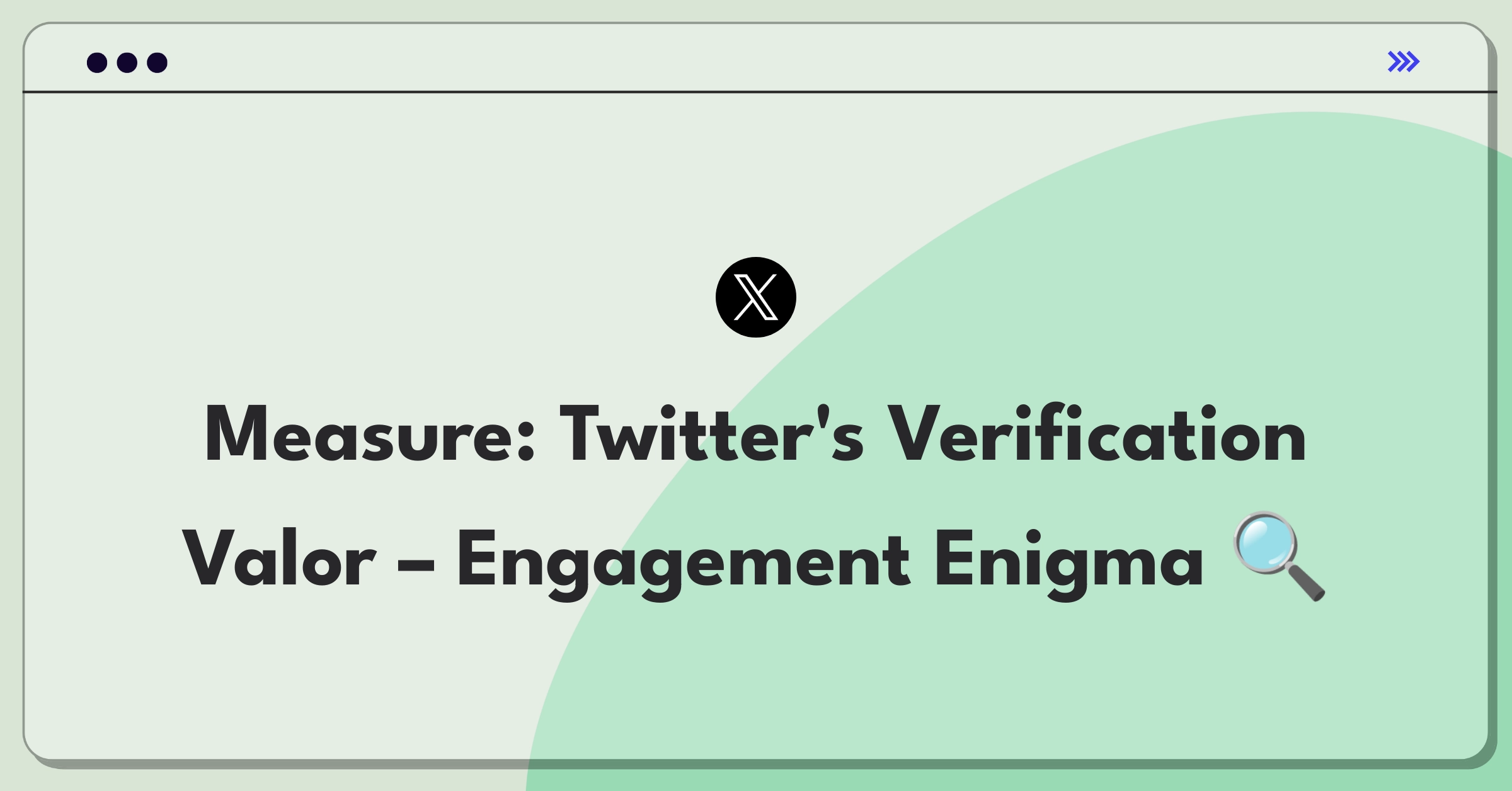Introduction
Defining the success of Twitter's user verification system is crucial for maintaining platform integrity and user trust. To approach this product success metric problem effectively, I'll follow a structured framework that covers core metrics, supporting indicators, and risk factors while considering all key stakeholders.
Framework Overview
I'll follow a simple success metrics framework covering product context, success metrics hierarchy.
Step 1
Product Context
Twitter's user verification system is a feature that authenticates and verifies the identity of notable accounts on the platform. Key stakeholders include:
- Users (both verified and non-verified)
- Advertisers
- Twitter's internal teams (product, trust & safety, revenue)
- Shareholders
The user flow typically involves:
- Application submission
- Review process
- Approval or rejection
- Ongoing monitoring and potential revocation
This system fits into Twitter's broader strategy of enhancing platform credibility and combating misinformation. Compared to competitors like Facebook, Twitter's verification process has historically been more opaque and selective.
In terms of product lifecycle, the verification system is in a mature stage but undergoing significant changes under new ownership.
Subscribe to access the full answer
Monthly Plan
The perfect plan for PMs who are in the final leg of their interview preparation
$99 /month
- Access to 8,000+ PM Questions
- 10 AI resume reviews credits
- Access to company guides
- Basic email support
- Access to community Q&A
Yearly Plan
The ultimate plan for aspiring PMs, SPMs and those preparing for big-tech
$99 $33 /month
- Everything in monthly plan
- Priority queue for AI resume review
- Monthly/Weekly newsletters
- Access to premium features
- Priority response to requested question


.png)